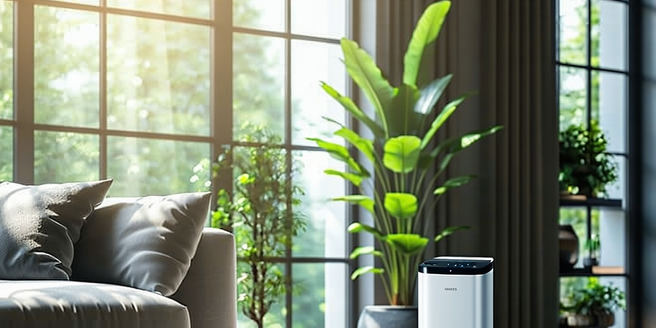
The Importance of Indoor Air Quality
Indoor air quality is a critical factor influencing human health and well-being. With people spending approximately 90% of their time indoors, the quality of the air they breathe has a significant impact on respiratory and overall health issues. Poor indoor air quality can lead to various health problems, including allergies, asthma, and other respiratory conditions. Pollutants such as dust, pollen, mold, and volatile organic compounds (VOCs) commonly found indoors contribute to air quality degradation. Addressing indoor air quality is essential for creating a healthy living environment and reducing the risk of chronic diseases. Improving ventilation, using air purifiers, and regular maintenance of HVAC systems are effective strategies to enhance indoor air quality. As awareness of these issues increases, more attention is being directed towards innovative solutions for cleaner indoor air.
Challenges in Traditional Air Purification Methods
Traditional air purification methods, while effective to some extent, face several challenges. One key issue is their limited capacity to eliminate microscopic pollutants, like ultrafine particles and certain gases. These systems often rely on filters that require regular maintenance and replacement, which can be costly and inconvenient for users. Furthermore, traditional purifiers may struggle to cope with fluctuating pollutant levels in dynamic environments. Another challenge is their energy consumption, which can lead to increased operational costs. Additionally, many conventional systems lack the capability to monitor air quality in real time, providing only passive purification. As a result, consumers are increasingly looking for more advanced solutions that can address these limitations by offering comprehensive, efficient, and smart air purification technology.
Advancements in Air Purification Technology
Significant advancements have been made in air purification technology, driven by the need to address the limitations of traditional methods. Modern systems now incorporate high-efficiency particulate air (HEPA) filters capable of trapping ultrafine particles, including allergens and pathogens. Activated carbon filters are also being used more frequently to remove volatile organic compounds and odors. In addition, innovations such as photocatalytic oxidation and ionization are emerging as powerful tools for degrading harmful pollutants at a molecular level. These advancements provide a more comprehensive approach to air purification, improving the overall efficacy and efficiency of indoor air quality management. Furthermore, the development of smart air purifiers equipped with sensors and connectivity features is transforming how indoor environments can be monitored and managed, providing users with more control and insight.
How IoT is Transforming Air Quality Monitoring
The integration of Internet of Things (IoT) technology is revolutionizing air quality monitoring. IoT enables real-time data collection and monitoring of indoor air conditions, allowing for the rapid detection of pollutants and timely interventions. With IoT sensors, air purifiers can be automated to respond to changes in air quality, optimizing their performance and energy consumption. This smart approach not only ensures a healthier indoor environment but also offers insights into air quality trends and potential sources of pollution. By using mobile apps and cloud-based platforms, users can access air quality information remotely and make informed decisions about their indoor environments. As IoT technology continues to advance, its role in air purification will likely expand, leading to more efficient and personalized air quality solutions.
The Role of AI in Smart Air Purification Systems
Artificial Intelligence (AI) is playing a crucial role in the evolution of smart air purification systems. AI algorithms can process vast amounts of air quality data to predict pollution patterns and optimize purifier operations. This predictive capability allows for proactive air quality management, reducing the presence of harmful pollutants before they reach significant levels. AI integration also enables the customization of air purification strategies based on individual user needs and environmental conditions. By learning from user habits and preferences, AI-enhanced systems can provide a more personalized and efficient purification experience. As the technology progresses, AI is expected to contribute significantly to the development of smarter, more adaptive air purification systems that are both effective and user-friendly.
Future Trends in Indoor Air Purification Technology
The future of indoor air purification technology is poised for exciting developments that will address the growing demand for cleaner indoor environments. One trend is the increased focus on sustainable and eco-friendly solutions, such as the use of biodegradable materials in filter design and energy-efficient systems. Another trend is the integration of advanced sensors and data analytics, providing deeper insights into air quality and personalized purification strategies. Wearable air quality monitors, capable of providing real-time analysis, will likely become more popular, offering individuals more control over their personal environment. Moreover, as urbanization continues, portable and adaptable air purification devices are expected to gain traction. As these advancements unfold, they promise to deliver more effective, accessible, and sustainable solutions for improving indoor air quality across diverse settings.
